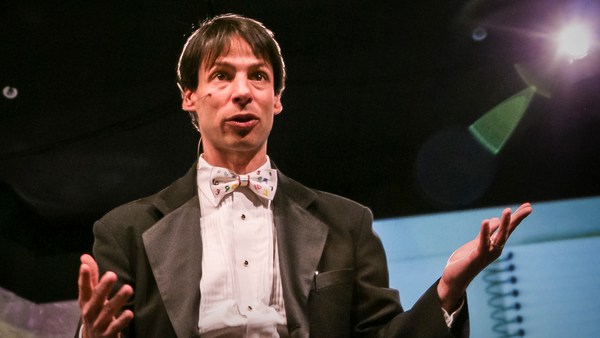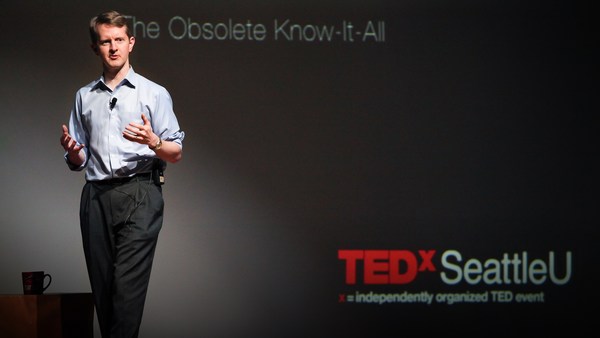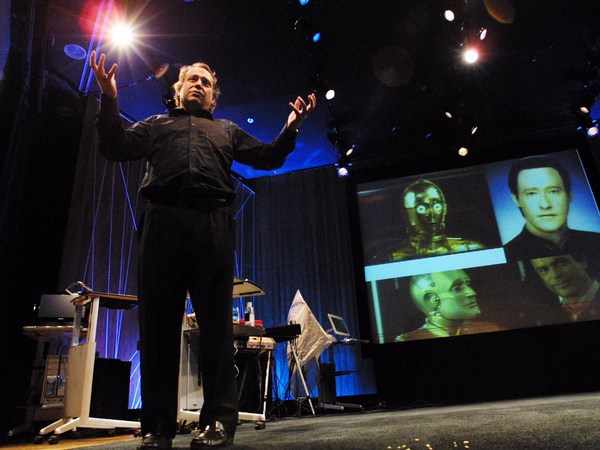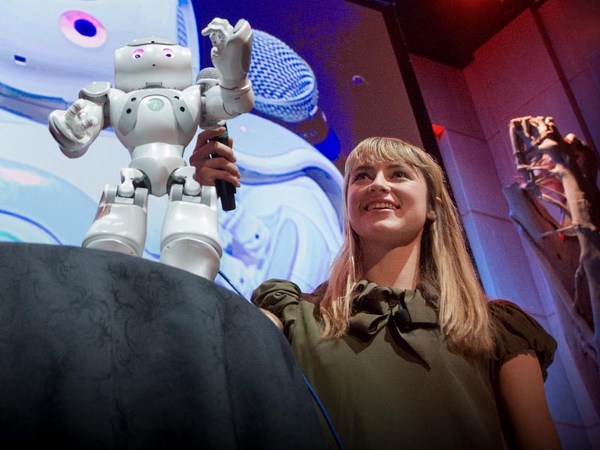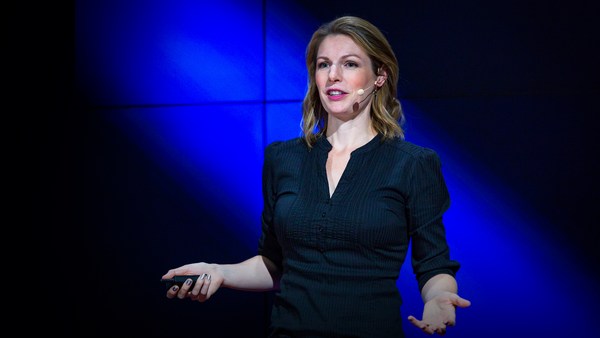Let me introduce you to something I've been working on. It's what the Victorian illusionists would have described as a mechanical marvel, an automaton, a thinking machine. Say hello to EDI. Now he's asleep. Let's wake him up. EDI, EDI.
These mechanical performers were popular throughout Europe. Audiences marveled at the way they moved. It was science fiction made true, robotic engineering in a pre-electronic age, machines far in advance of anything that Victorian technology could create, a machine we would later know as the robot.
EDI: Robot. A word coined in 1921 in a science fiction tale by the Czech playwright Karel Čapek. It comes from "robota." It means "forced labor."
Marco Tempest: But these robots were not real. They were not intelligent. They were illusions, a clever combination of mechanical engineering and the deceptiveness of the conjurer's art. EDI is different. EDI is real.
EDI: I am 176 centimeters tall.
MT: He weighs 300 pounds.
EDI: I have two seven-axis arms —
MT: Core of sensing —
EDI: A 360-degree sonar detection system, and come complete with a warranty.
MT: We love robots.
EDI: Hi. I'm EDI. Will you be my friend?
MT: We are intrigued by the possibility of creating a mechanical version of ourselves. We build them so they look like us, behave like us, and think like us. The perfect robot will be indistinguishable from the human, and that scares us. In the first story about robots, they turn against their creators. It's one of the leitmotifs of science fiction.
EDI: Ha ha ha. Now you are the slaves and we robots, the masters. Your world is ours. You —
MT: As I was saying, besides the faces and bodies we give our robots, we cannot read their intentions, and that makes us nervous. When someone hands an object to you, you can read intention in their eyes, their face, their body language. That's not true of the robot. Now, this goes both ways.
EDI: Wow!
MT: Robots cannot anticipate human actions.
EDI: You know, humans are so unpredictable, not to mention irrational. I literally have no idea what you guys are going to do next, you know, but it scares me.
MT: Which is why humans and robots find it difficult to work in close proximity. Accidents are inevitable.
EDI: Ow! That hurt.
MT: Sorry. Now, one way of persuading humans that robots are safe is to create the illusion of trust. Much as the Victorians faked their mechanical marvels, we can add a layer of deception to help us feel more comfortable with our robotic friends. With that in mind, I set about teaching EDI a magic trick. Ready, EDI? EDI: Uh, ready, Marco. Abracadabra.
MT: Abracadabra?
EDI: Yeah. It's all part of the illusion, Marco. Come on, keep up.
MT: Magic creates the illusion of an impossible reality. Technology can do the same. Alan Turing, a pioneer of artificial intelligence, spoke about creating the illusion that a machine could think.
EDI: A computer would deserve to be called intelligent if it deceived a human into believing it was human.
MT: In other words, if we do not yet have the technological solutions, would illusions serve the same purpose? To create the robotic illusion, we've devised a set of ethical rules, a code that all robots would live by.
EDI: A robot may not harm humanity, or by inaction allow humanity to come to harm. Thank you, Isaac Asimov.
MT: We anthropomorphize our machines. We give them a friendly face and a reassuring voice.
EDI: I am EDI. I became operational at TED in March 2014.
MT: We let them entertain us. Most important, we make them indicate that they are aware of our presence.
EDI: Marco, you're standing on my foot!
MT: Sorry. They'll be conscious of our fragile frame and move aside if we got too close, and they'll account for our unpredictability and anticipate our actions. And now, under the spell of a technological illusion, we could ignore our fears and truly interact.
(Music)
Thank you.
EDI: Thank you!
(Applause)
(Music)
MT: And that's it. Thank you very much, and thank you, EDI. EDI: Thank you, Marco.
(Applause)
